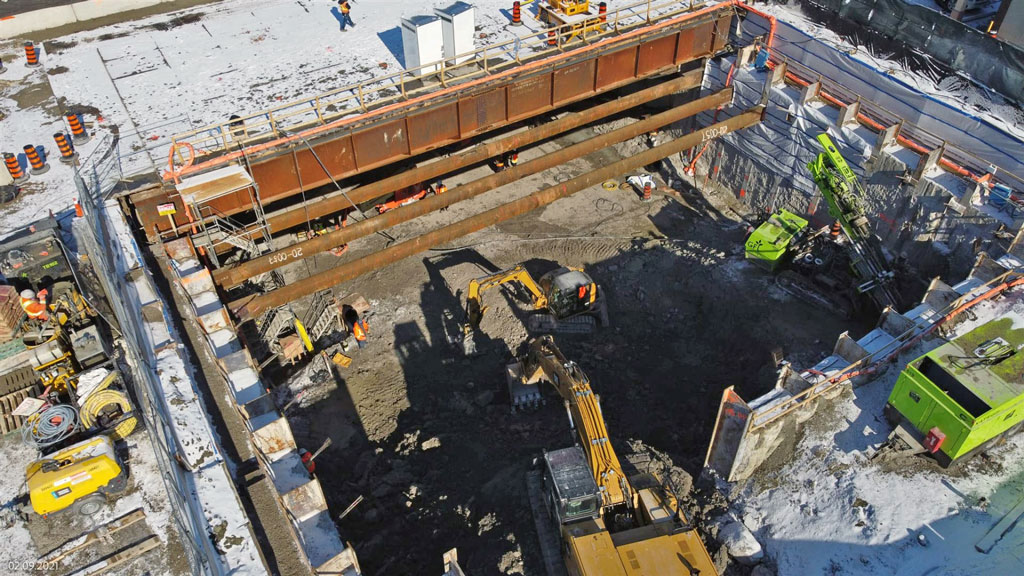When it comes to dealing with excess soils, early planning, engagement and hiring a qualified person (QP) are key.
That was the message from a panel of experts during the Excess Soils Symposium held recently in Toronto moderated by Andy Manahan, president of Manahan Consulting Services.
As of Jan. 1, 2023, under the Excess Soil Regulation, reuse planning requirements are going to be required for some projects, including filing a notice in the excess soil registry, retaining a QP to prepare an assessment of past uses, a sampling and analysis plan and a soil characterization report, and an excess soil destination assessment report, as well as implementing a tracking system, states Ontario’s regulatory registry.
“The earlier you start planning these projects it will definitely help you down the road,” said Ryan Moniz, director of business development with GFL Environmental. “It’s really about getting ahead of the game.”
Early and appropriate characterization with good representative documentation is really going to be essential as a best practice across the industry, he added.
“The demand of excess soil in the marketplace far exceeds the supply of available disposal space, depending on soil quality obviously,” Moniz said. “Those reuse sites that have been permitted under Table 2 effectively can’t take the same soil quality as of Jan. 1, 2023. That creates, ‘where does the soil go?’
“I talk to clients that are early engaging on some projects three, four, five years in advance (asking) what are our options? What are some soil management plans?”
Freesia Waxman, senior engineer and excess soil expert with Grounded Engineering, agreed hiring a QP and planning ahead are critical.
“I would recommend that once you hire that QP really dig into how your soil movement is going to take place on the site,” said Waxman. “Do you need a soil management plan? Are you going to generate liquid soil? These are things that are an afterthought sometimes.
“Walk through how the execution is going to be staged, what’s the timing for all this and if you know the reuse site or where you would like it to go ideally that sets you so far ahead.”
Sanjay Coelho, senior policy analyst with the Ministry of the Environment, Conservation and Parks (MECP) pointed out the ministry has prioritized open communication with the stakeholders and that in addition to the Excess Soils Engagement Group, there have been fact sheets, websites and resources created to help people deal with the regulations.
Grant Walsom, a partner with XCG Consulting Limited, led the steering committees and creation of the Excess Soils Best Practices documents for the MECP.
“We brought together roundtables of people from those specific areas to look at what the content of those documents would be and what’s acceptable and how we do operate within the province around this topic,” Walsom explained.
Walsom said the Canadian Council of Ministers of the Environment has come up with a draft guidance document.
“It takes into account the regulatory tools of the different provinces and establishes a framework that can be adopted by all,” he said, adding it’s not regulation, it’s guidance and it may be good for provinces that don’t have excess soils regulations.
When asked how construction companies are changing the way they manage excavated materials, Moniz said some of the larger projects such as the subway tunnelling in Toronto and the LRTs in Ottawa and Kitchener that are yielding large volumes of soil are finding ways to deal with it onsite.
“They’re building on site solidification units to tighten up the soils,” he said. “They’re trying to manage as much soil onsite and getting it to a stronger state to pass the slump (test). It opens up your reuse site options exponentially if you can do that.”
Waxman spoke about projects and sites where there is hydro excavation taking place.
“An area that we as industry are falling flat is filling out those hauling records properly,” she noted. “We’ve seen drivers come to the site and they don’t have source site information and I know this is happening across Ontario.
“Just the nature of hydro excavation, sometimes you are grabbing soil from multiple small project areas and how do you put those all onto a hauling record. You need to think about these things ahead of time.”
She added, “My best advice is if you are involved in a project that involves hydro excavation please ensure there are processes in place to make sure that source site information is being populated. They are being turned away at the reuse site and now the city has to playing whack-a-mole with all the illegal dump sites that are popping up.”
Follow the author on Twitter @DCN_Angela











Recent Comments
comments for this post are closed